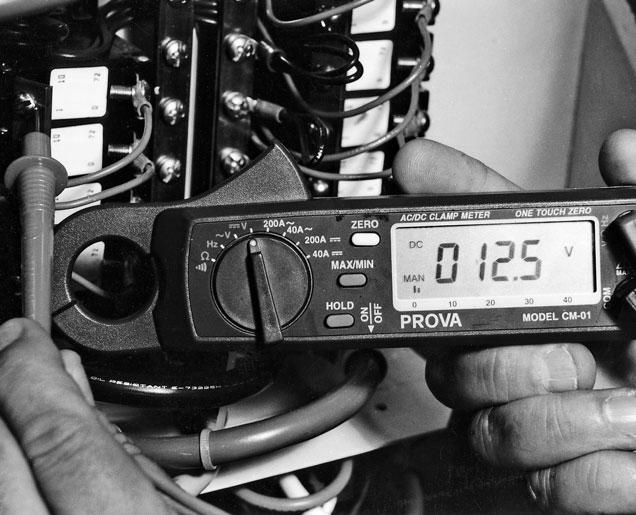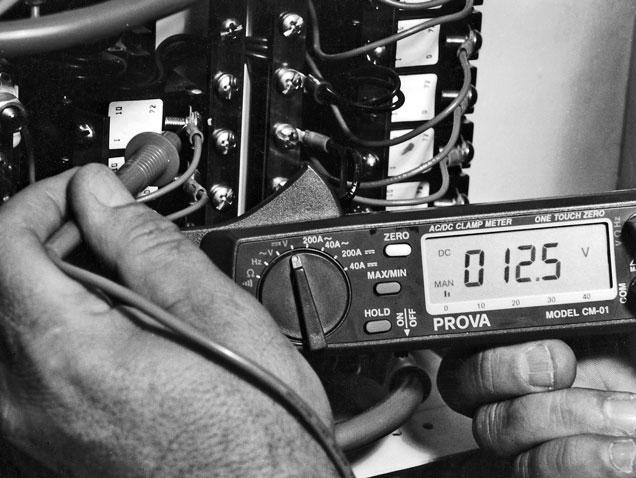
1 minute read
Levels of Circuit Protection
A
Figs. 4-14a, b. Meter test sequence for a circuit breaker. With one meter lead attached to a known good ground, check the feed side of the breaker for 12 volts. With the breaker turned on, you should have 12 volts at the adjacent terminal on the breaker. If not, the breaker is faulty and must be replaced.
B Levels of Circuit Protection

Fuses and circuit breakers are intended to protect the wiring and components in the circuit from damage due to excess current flowing through any part of the circuit at any time. The ABYC has come up with standards designed to provide the most practical solutions to the problem of protecting circuits. However, even the most experienced electricians and boatbuilders sometimes have trouble interpreting these standards.
The 100–150 Percent Rule
The 100–150 percent rule contains the standards for the rating of fuses and circuit breakers for different types of circuits under differing circumstances. Some circuits must be protected with a fuse or circuit breaker that’s no more than 100 percent of the total amperage-handling limits of all the components on a circuit, and other circuits may have a fuse or circuit breaker rated as high as 150 percent of the total amperage. One such division of standards is between motor circuits and nonmotor circuits.
Motor Circuits
Motor circuits fall into a unique category. Starter-motor circuits on boats are the only circuits that are exempt from the requirement for circuit protection. The protection ratings for other DC motors fall into a gray area. In a perfect world, these motors would have a circuit breaker built in, as in most AC motors you may be familiar with. (The little red reset button on the side of the motor is actually a circuit breaker.) However, most of the DC motors you’ll run into on board your boat do not have this type of




